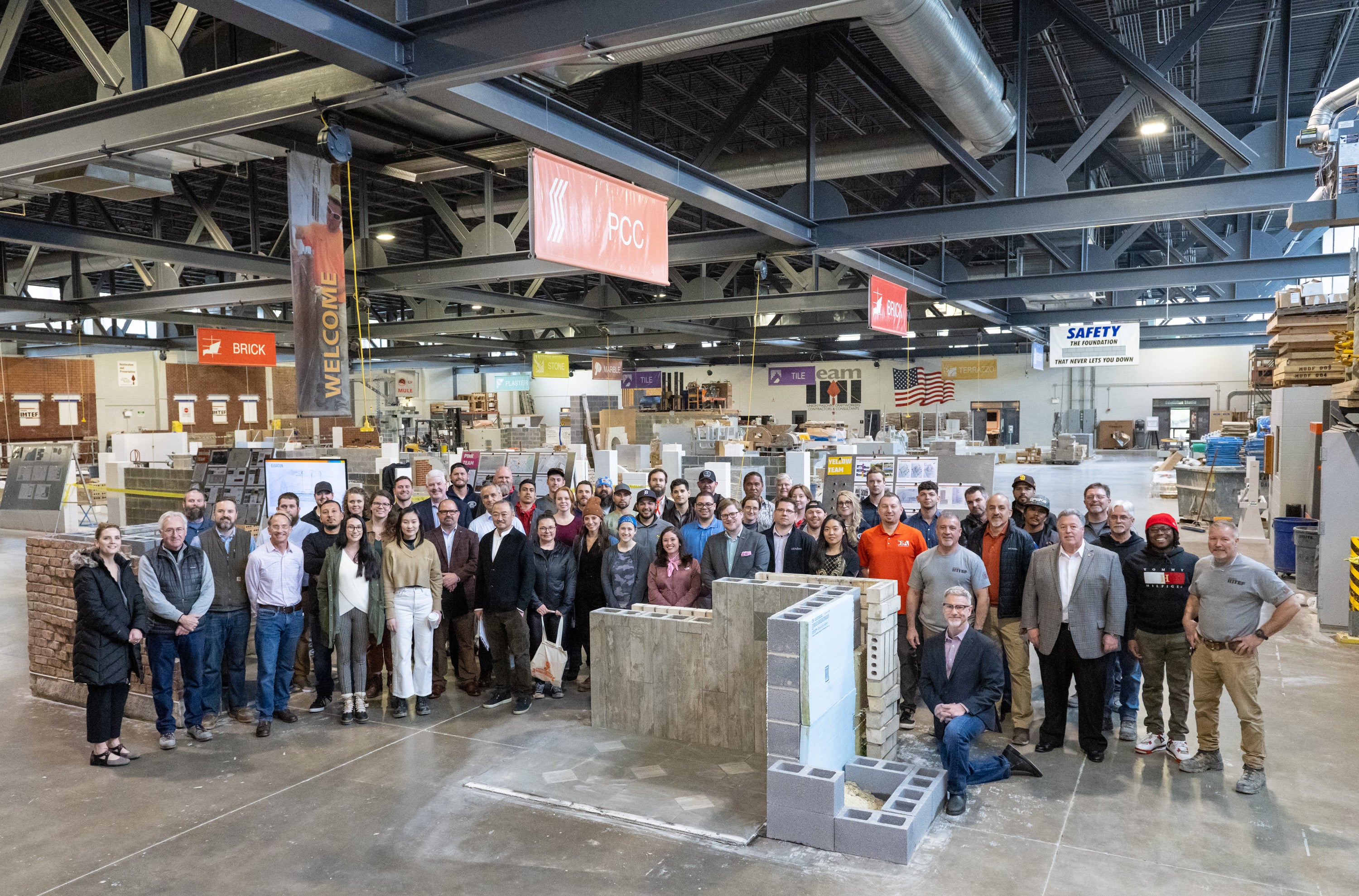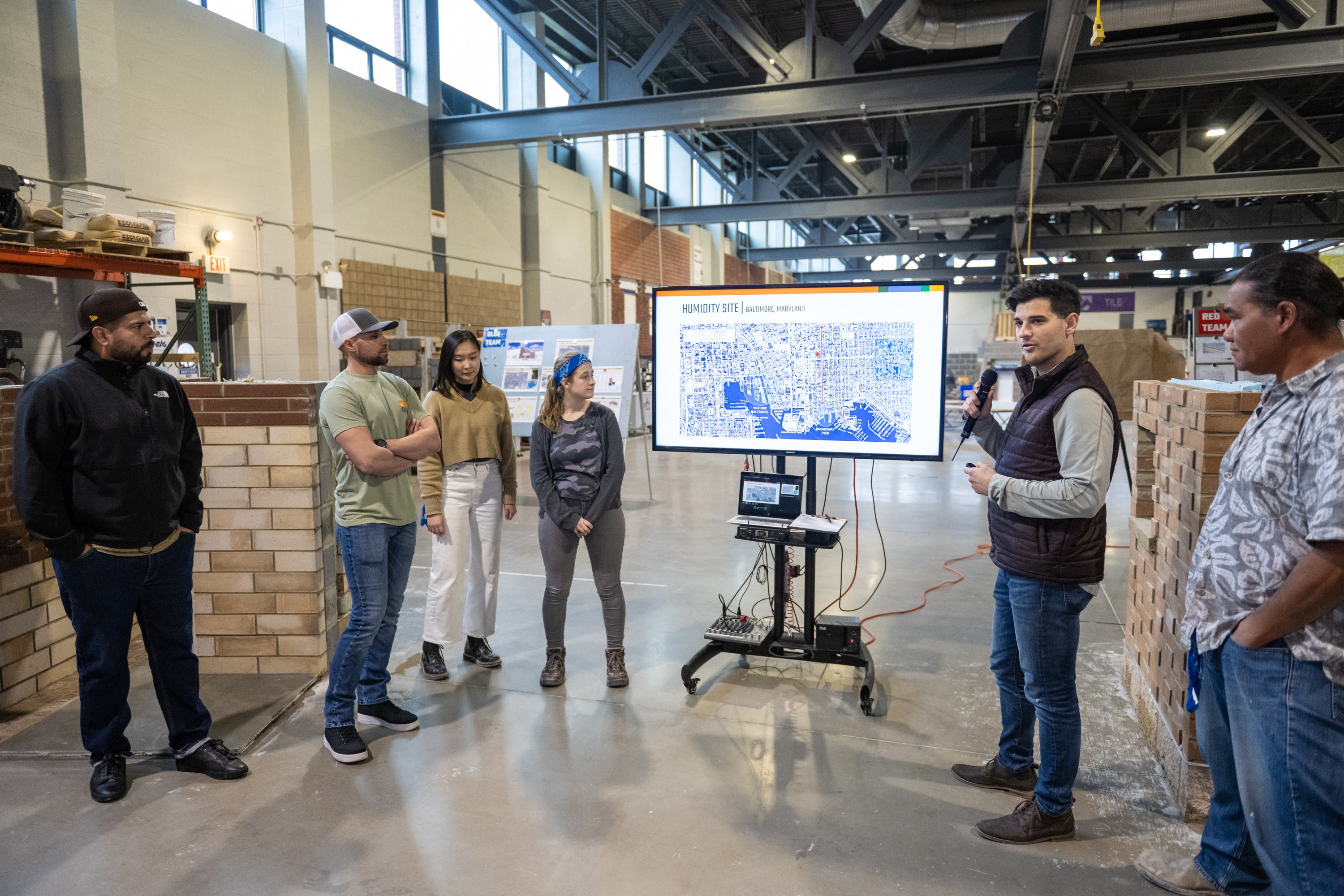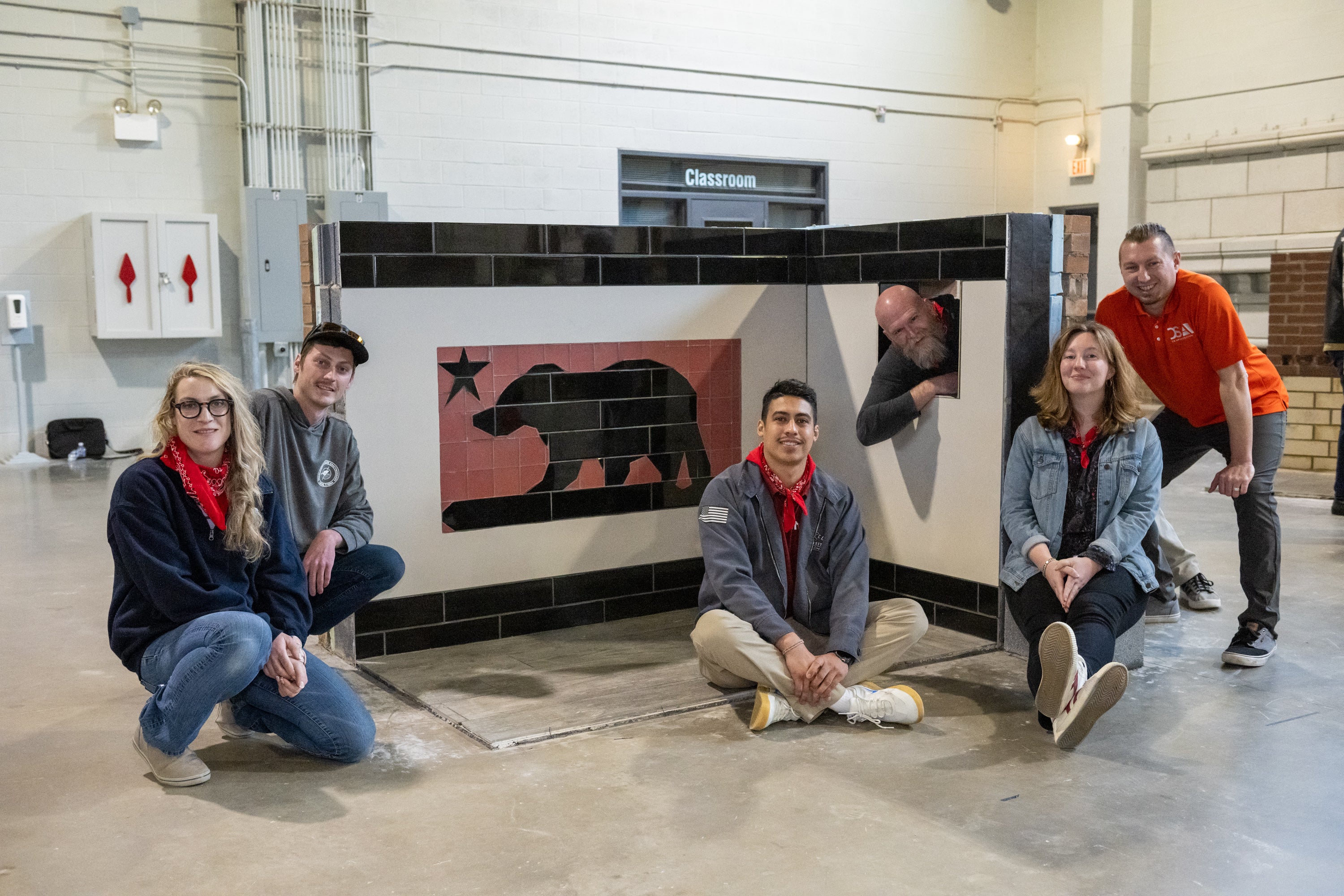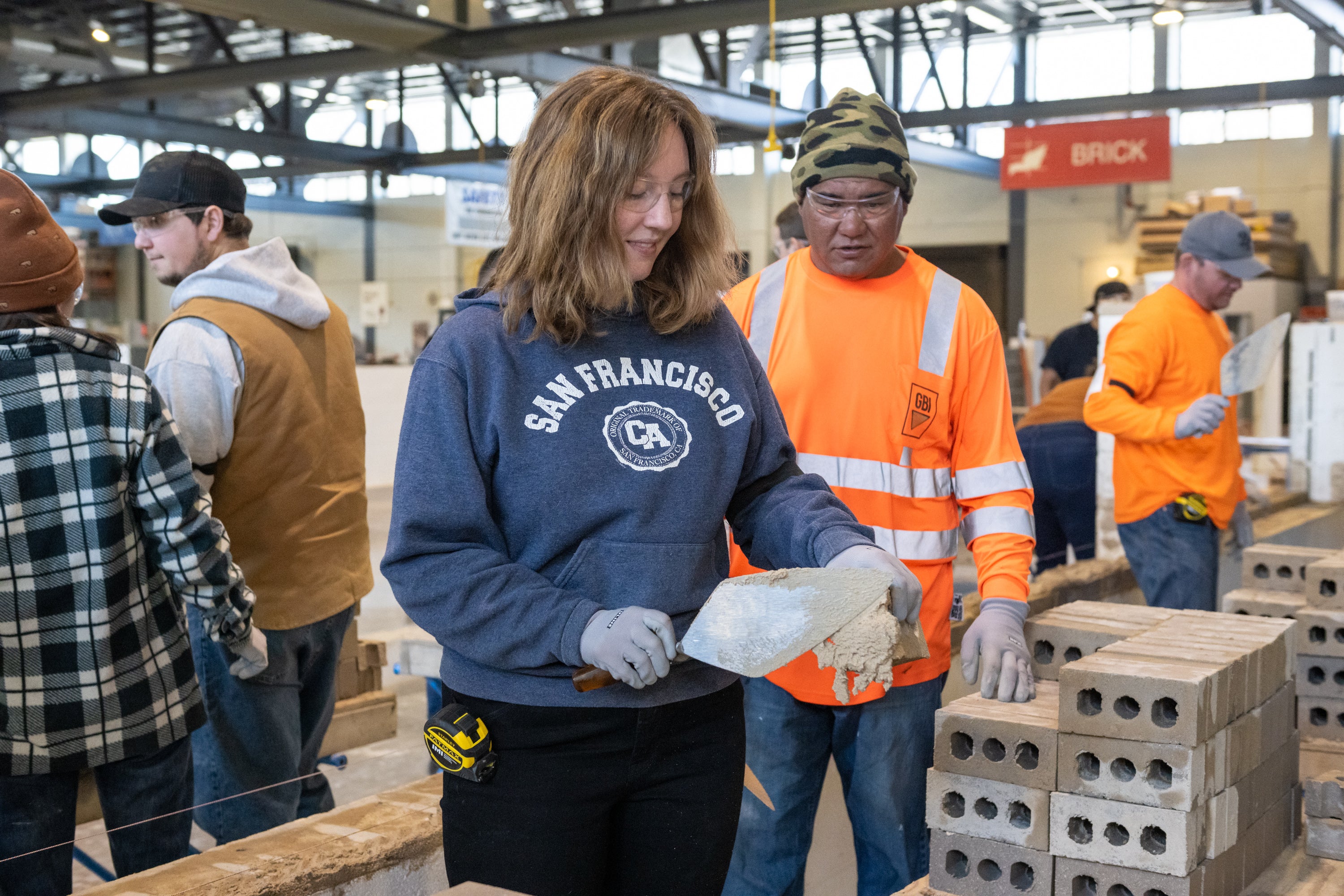Young Architects and BAC Craftworkers Inspire One Another at Masonry Camp
During Masonry Camp 2023, 41 young architects and BAC craftworkers teamed up for a weeklong collaborative learning experience to deepen their understanding of how to design and build high-performing masonry and tile projects.
The program, held at the BAC/IMI John J. Flynn International Training Center in Bowie, MD, provides an immersive look at materiality and constructability through classroom lectures, hands-on building exercises, and team-building activities.
The week culminated in a group challenge to design and build representative mock-ups of resilient, sustainable community and workforce development centers. Seven teams comprised of both architects and craftworkers worked to address extreme environmental events in different parts of the country. The solutions they developed reflect the local area’s existing architecture and show how masonry and tile structures serve climate-threatened communities.

Executive Board members, and IMI and IMTEF staff.
A team of judges — BAC President and IMI Co-Chair Timothy Driscoll, IMTEF National Training Director Anthony DiPerna, Principal at Moto Designshop Eric Oskey, and Business Unit Leader at DPR Construction Camilo Garcia — evaluated and inspected each team’s mock-up and presentation. Each judge brought with them their unique personal and professional perspective on the projects and provided insight to the teams after their presentations. They took into consideration the overall programmatic challenges of each project as well as the design intent. When it came to reviewing the mock-ups, the judges were amazed at the level of craftsmanship performed by both architect and craftworker participants in such a short period of time.

“This year’s program epitomizes the work we do to educate designers and craftworkers throughout their careers and to bring designers and builders together to create a better built environment,” said BAC President Driscoll. “Designers learned more about materiality, the advantages of masonry and tile —particularly when they’re properly installed, and an appreciation for the craft of masonry and tile work. Masonry Camp also empowers craftworkers to share their own knowledge of our materials with the design community, both in the training center and on the job, because of the collaborative experience.”
The experience provided the architects and craftworkers with a newfound respect and appreciation for one another’s work. “It’s great to know there are artisans out there that care about the details as much as we do as designers,” said Zachary Smith, an architect from Skidmore, Owings, and Merrill.

The feeling was mutual for Keaka Kuhaulua, bricklayer from BAC Local 1 Hawaii. “It was eye-opening for me to see everything that goes into the design process. We’re craftworkers, but architects are craftspeople, too.”
That eye opening experience is a part of what makes Masonry Camp such a transformational experience for the young designers and builders who have the chance to participate. One that can influence how they practice their respective crafts in the future.
“We hope that as Masonry Campers advance in their careers, the collaboration and dialogue they engaged in during this program will help them cross professional boundaries to ensure successful masonry and tile projects,” explained Roy Ingraffia, IMI National Director of Industry Development.
Indeed, many Masonry Camp alumni go on to one day assume leadership positions in the industry, whether as principals of design firms, union officials, owners of signatory contracting companies, or otherwise. “The talented designers and craftworkers at Camp represent the future leaders of our industry who have the power to influence both design and installation practices,” says Ingraffia.


In a design industry that is often digitally driven, the participants were able to step out of that realm at Camp and discover the value of early-project tactile-based collaboration. The exercise allowed the architect team members to appreciate the level of detail and information that installers need to accurately interpret design intent on a project.
“Just because you can draw it or model it doesn’t mean it can be built,” said Chad Clary of Studio A Architecture. He went on to encourage his colleagues at Camp to make a point to talk with contractors and craftworkers on jobsites when the opportunity arises. “They have the construction knowledge and pride in their work. They love to share that information.”
